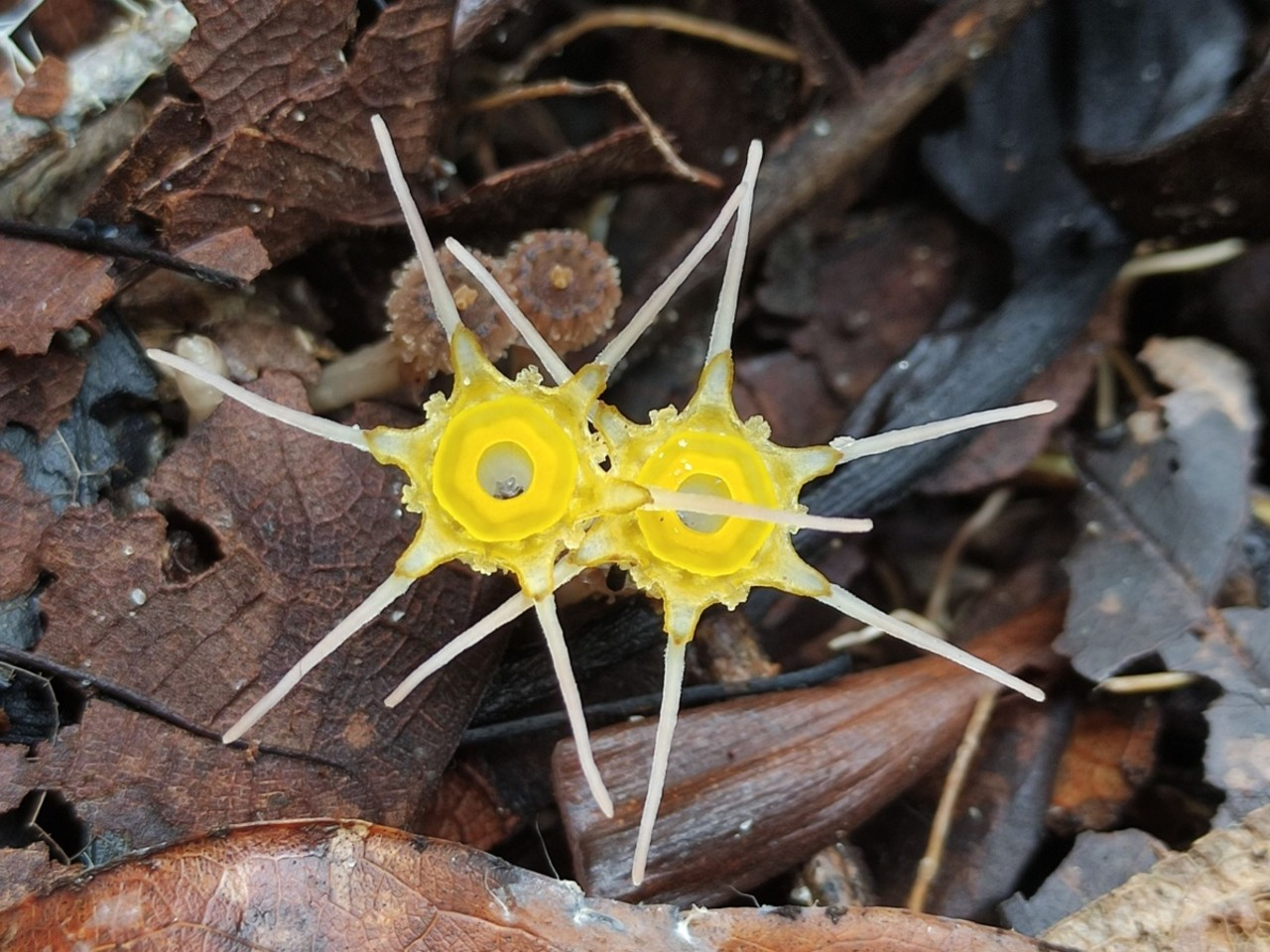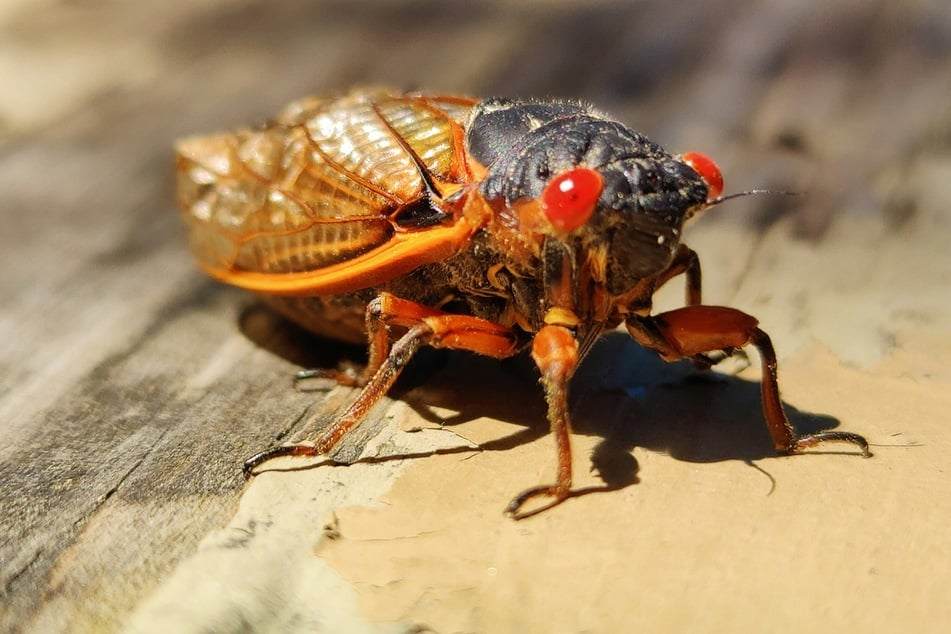Thismia aliasii, a newly discovered plant species, has captivated botanists with its striking appearance and rare ecological niche. Found in the lush Malaysian rainforest of Terengganu, this peculiar member of the Thismia genus is often referred to as the “fairy lantern” due to its enchantingly unique structure. Researchers were thrilled to unveil Thismia aliasii, a significant addition to the list of endangered plant species, highlighting the pressing need for conservation efforts in its native habitat. The plant’s mycoheterotrophic nature, relying on fungi instead of sunlight for nourishment, adds to its intriguing biological profile. As we learn more about such remarkable discoveries, the fragility of this ecosystem comes into sharp focus, reminding us of the delicate balance within the natural world.
Introducing Thismia aliasii, an extraordinary plant that has recently been classified in the vibrant landscape of Malaysia, specifically in the Terengganu region renowned for its diverse flora. This newly documented species is a part of the Thismia family, known for its fascinating adaptation to life without photosynthesis, operating instead through a symbiotic relationship with fungi. Often termed “mycoheterotrophic plants,” members of this family are a marvel to botanists and conservationists alike, particularly as they face the threat of extinction in their natural habitats. The enchanting appearance of Thismia aliasii, often likened to a glowing lantern amidst its verdant surroundings, underscores the importance of preserving these fragile ecosystems. Such discoveries propel our understanding of biodiversity and highlight the urgent need for conservation initiatives to protect these rare gems within the Malaysian rainforest.
Discovery of Thismia aliasii: A New Addition to the Malaysian Rainforest
The recent discovery of Thismia aliasii, a newly described species of the Thismia genus, marks an exciting chapter in the exploration of plant diversity in Malaysia. Found in the upper hill dipterocarp forests of Terengganu, Thismia aliasii brings attention to the incredible wealth of undiscovered species hiding in plain sight within one of the world’s most biodiverse ecosystems. The plant was aptly nicknamed the “fairy lantern” due to its whimsical morphology, resembling a lantern adorned with petal-like appendages that catch the eye amidst the lush vegetation.
This remarkable discovery underscores the importance of conservation efforts within the Malaysian rainforest. Despite its fame as a hiking destination, the habitat of Thismia aliasii is under threat from environmental changes and increased human activity. As researchers have documented only five specimens since its discovery in 2019, it highlights the urgent need for protective measures against its critically endangered status identified by the International Union for Conservation of Nature (IUCN). Each new species discovered calls for concerted efforts to preserve these unique ecosystems.
Mycoheterotrophic Plants: The Unique Lifestyle of Thismia Species
Thismia aliasii is a striking example of mycoheterotrophic plants, a fascinating group that has adapted away from the traditional process of photosynthesis. Instead of relying on sunlight for energy, Thismia species form a symbiotic relationship with fungi. This dependency provides them with essential nutrients, allowing them to thrive in the sheltered, shady understorey of the Malaysian rainforest, where light is often scarce. This unique lifestyle sets them apart from most other plants, drawing interest from botanists and biologists alike.
These adaptations also extend to the reproductive strategies of mycoheterotrophic plants, including Thismia aliasii, which have evolved intriguing pollination mechanisms. The species is observed to attract specialized pollinators such as fungus gnats, which are lured by the peculiar flowers that often mimic the environments in which these insects thrive. Such characteristics speak volumes about the evolutionary paths that led to their survival in competitive and challenging habitats, emphasizing their roles in the broader ecological tapestry of the rainforest.
Conservation Efforts for Endangered Plant Species in Thailand
The plight of Thismia aliasii emphasizes a larger issue facing many endangered plant species in Thailand and other regions rich in biodiversity. With ongoing habitat loss due to urbanization, agriculture, and tourism, rare plant species are often pushed toward the brink of extinction. Conservation initiatives aimed at protecting these critical habitats must be a priority, focusing on preserving the delicate balance of ecosystems where unique species like Thismia can flourish.
Moreover, conservation efforts should also include community education and engagement programs. Raising awareness about the significance of preserving endangered plant species can foster local commitment to habitat protection. Collaborative efforts between researchers and local communities can lead to effective initiatives to monitor and protect regions that are home to unique flora, ensuring that future generations can appreciate the beauty and complexity of plants like Thismia aliasii.
The Ecological Importance of Discovering New Plant Species
Discovering new plant species, such as Thismia aliasii, significantly enhances our understanding of ecological networks and biodiversity. Each new addition informs researchers about the complex interactions that occur within ecosystems, highlighting the delicate balance of life forms dependent on one another, including plants, fungi, and pollinators. Such discoveries can also provide insights into the evolutionary history of plant life, elucidating how diverse forms have adapted to specific environmental conditions.
Furthermore, each newly documented species provides valuable genetic resources which could benefit conservation efforts and even agriculture. Understanding the unique traits of new plants like Thismia can lead to applications in ecosystem restoration and sustainability practices. As scientists continue to explore and document flora in biodiverse hotspots like the Malaysian rainforest, they reveal not only the richness of our natural heritage but also the urgent need for its protection.
The Unique Morphology of Thismia aliasii
Thismia aliasii stands out not just for its rarity but for its unique morphological features. The plant exhibits a bulbous top adorned with slender, petal- or tentacle-like appendages, creating a captivating appearance reminiscent of a fairy lantern. Such unique morphology not only intrigues botanists but also is believed to play a crucial role in its reproductive success, attracting specific pollinators that are essential for its lifecycle.
This distinctive structure of Thismia aliasii provides hints at how specific environmental pressures have shaped its evolution. Such specialized adaptations illustrate the intricate connections within the ecosystem—where the physical form of a plant is a response to its ecological niche, affected by factors like light availability, moisture, and interactions with herbivores and pollinators. The study of such plants broadens our understanding of plant evolution and survival strategies in the dynamic conditions of the Malaysian rainforest.
The Role of Biodiversity in Ecosystem Health
Biodiversity plays a crucial role in maintaining ecosystem health and resilience. The discovery of Thismia aliasii, alongside other Thismia species, is indicative of the rich biodiversity present in the Malaysian rainforest, which is vital for ecosystem stability. Each species contributes to the intricate web of life, supporting various ecological functions ranging from nutrient cycling to habitat structure. Loss of such biodiversity can lead to degraded ecosystems, altering the balance required for healthy environmental processes.
Furthermore, high biodiversity can enhance ecosystem services, such as erosion control, water purification, and carbon storage. The preservation of unique species like Thismia aliasii ensures the continuation of these benefits, which are vital for both human well-being and ecological integrity. Protecting endangered plants and their habitats is essential not just for their survival but for the health of the broader ecosystem they inhabit.
The Significance of the Malaysian Rainforest in Global Biodiversity
The Malaysian rainforest is recognized as one of the Earth’s biodiversity hotspots, hosting a multitude of plant and animal species, including the critically endangered Thismia aliasii. The region’s unique climatic conditions and rich geological history have fostered a remarkable variety of flora and fauna, making it a critical area for conservation efforts. The intricate ecosystems within this rainforest contribute significantly to global biodiversity and play crucial roles in regulating climate and supporting life.
However, the significance of the Malaysian rainforest extends beyond its local environment. It serves as a vital reservoir of genetic resources essential for food security, medicine, and sustainable development worldwide. The ongoing discovery of new plant species reinforces the need for global attention to conservation efforts in this region, highlighting how local actions can have profound impacts on a global scale. Protecting biodiversity is not only paramount for the survival of unique species like Thismia aliasii but for the health and well-being of our planet.
Future Research Directions in the Study of Thismia Species
As more species like Thismia aliasii are discovered, future research directions will pivot towards understanding their ecological roles and potential applications in areas like medicine and environmental restoration. Scholars are encouraged to undertake studies focusing on the relationships between These mycoheterotrophic plants and their symbiotic fungi, which hold secrets to nutrient cycling and ecosystem health. Exploring these connections could reveal innovative approaches to sustainability and conservation.
Additionally, further research into the specific habitats of Thismia species is essential to understanding their habitat requirements and threats. As urbanization and climate change continue to impact ecosystems, comprehensive studies can inform conservation strategies that protect these rare plants and their environments. Key to these efforts will be a collaboration between researchers, conservationists, and local communities to monitor changes and safeguard biodiversity for future generations.
Frequently Asked Questions
What is Thismia aliasii and why is it significant?
Thismia aliasii is a newly discovered plant species found in the Malaysian rainforest, notable for its striking appearance resembling a fairy lantern. Its discovery in 2019 highlights the biodiversity of Terengganu and emphasizes the need for conservation, as it is classified as critically endangered.
How was Thismia aliasii discovered?
Thismia aliasii was discovered by researcher Mohamad Alias Shakri in a mountainous area of Terengganu, Malaysia, near a popular hiking trail. This finding marks it as a unique addition to the Thismia species, showcasing the unexplored diversity in tropical ecosystems.
Why is Thismia aliasii considered critically endangered?
Thismia aliasii is classified as critically endangered due to its limited sightings, with only five specimens documented since its discovery. The increasing popularity of mountaineering in its habitat has led to environmental damage, threatening its survival.
What are mycoheterotrophic plants and how does Thismia aliasii fit this category?
Mycoheterotrophic plants, like Thismia aliasii, do not perform photosynthesis and rely on a symbiotic relationship with fungi for nutrients. This unique adaptation allows them to thrive in shady regions of the Malaysian rainforest, despite their dependence on other organisms for survival.
What environmental conditions does Thismia aliasii thrive in?
Thismia aliasii thrives in moist, shady regions of upper hill dipterocarp forests within the Malaysian rainforest. This specific habitat is crucial for its growth and reproduction, highlighting the importance of preserving such environments for endangered plant species.
What role do fungi play in the life cycle of Thismia aliasii?
In the life cycle of Thismia aliasii, fungi provide essential nutrients, as the plant has evolved away from photosynthesis. Thismyia acts as a parasite, relying on the fungal partner for energy and sustenance, which is typical for other Thismia species.
What makes the flowers of Thismia aliasii unique?
The flowers of Thismia aliasii are distinctive for their bulbous tops and appendages resembling tentacles, which attract specialized pollinators like fungus gnats. This unique shape is designed to facilitate its mycoheterotrophic lifestyle and ensure reproduction.
How does the discovery of Thismia aliasii impact our understanding of biodiversity?
The discovery of Thismia aliasii underscores the rich biodiversity of the Malaysian rainforest and the fact that even well-visited areas can still harbor unknown species. It emphasizes the need for continued exploration and conservation efforts in these ecosystems.
What can be done to help protect Thismia aliasii and its habitat?
To protect Thismia aliasii, conservation efforts should focus on habitat preservation within its native Malaysian rainforest, reducing mountaineering impacts, and enhancing awareness about endangered species. Supporting research and conservation initiatives is vital for the survival of this unique plant.
Can Thismia aliasii be grown in cultivation outside its natural habitat?
Cultivating Thismia aliasii outside its natural habitat is challenging due to its dependence on specific fungi for nutrition and its specialized growth conditions. Conservation in its native environment is currently the best approach for this critically endangered species.
| Key Point | Details |
|---|---|
| Discovery of the Species | Thismia aliasii was discovered in 2019 by Mohamad Alias Shakri in Terengganu, Malaysia. |
| Unique Features | The plant is nicknamed ‘fairy lantern’ due to its fantastical appearance, resembling a slender starfish. |
| Habitat | Thrives in moist, shady regions of upper hill dipterocarp forests. |
| Rarity | Only five specimens of Thismia aliasii have been documented since its discovery. |
| Conservation Status | Listed as critically endangered due to habitat damage from mountaineering activities. |
| Ecological Role | As a mycoheterotrophic plant, Thismia aliasii relies on fungi for nutrition instead of photosynthesis. |
| Pollination | Features flowers that attract specialized insects for pollination. |
Summary
Thismia aliasii is a newly discovered plant species that represents the rich biodiversity of Malaysia’s Terengganu state. This unique plant, discovered in a mountainous region, is characterized by its striking appearance and peculiar ecological role, highlighting both the wonders of nature and the urgent need for conservation efforts.



